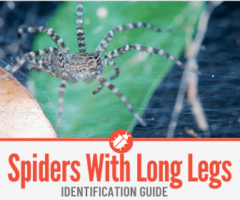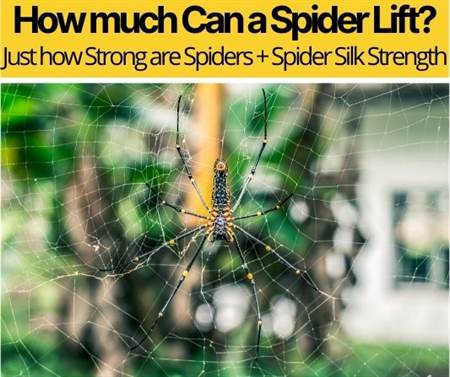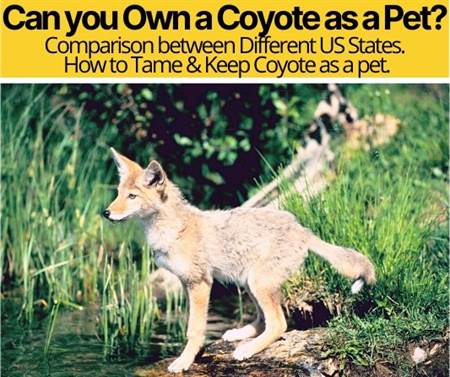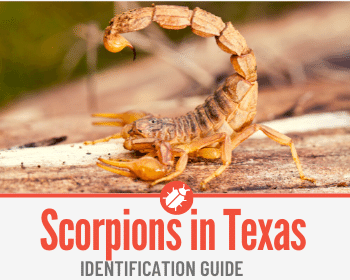 Most of the Scorpions in the United States are found among the deserts of Arizona and New Mexico, but several do make their home in Texas.
Most of the Scorpions in the United States are found among the deserts of Arizona and New Mexico, but several do make their home in Texas.
In this guide you will find:
- What Scorpions you can find in Different parts of Texas,
- Which Scorpions in Texas are Dangerous & Venomous,
- Pictures of the Most Common Scorpions found in Texas & How to Identify them,
- How to Keep Scorpions out of your house in Texas.
Nocturnal in nature, most scorpion sightings in Texas will be at night while most of the world is asleep.
Scorpions in Texas can be easily found if one has a blacklight handy due to their fluorescent exoskeleton that makes it look like they glow in the dark.
In this guide, we will cover Scorpions that can be found in East, South, West & Central Texas.
If travelling to Texas, here are the 12 Scorpions you need to look out for:
- Striped Bark Scorpion
- Texas Cave Scorpion
- Trans-Pecos Smooth Claw Scorpion
- Stripe-Tailed Scorpion
- Intermediate Scorpion
- Wauer’s Scorpion
- Big Bend Scorpion
- Thick Handed Scorpion
- Pseudouroctonous Brysoni
- Russell’s Scorpion
- Giant Desert Hairy Scorpion
- Eastern Sand Scorpion
Striped Bark Scorpion
The Striped Bark Scorpion (Centruroides vittatus ) is yellowish to tan in color, with two line markings along the back of their upper abdomen.
These lines, however, can become faded over time making it more difficult to distinguish.
Striped Bark Scorpions are also about 2 to 2 ½ inches in length, making them great at Hide and Seek, especially when they come out to find food at night.
The Striped Bark Scorpion is the most common Scorpion in all of Texas and can be found throughout the state but most commonly in Central Texas.
If you are stung by a Striped Bark Scorpion there will be a few minutes of sharp stabbing pain and then a few days of discomfort.
However, if you begin to experience any shortness of breath or elevated heart rate, you should see a medical professional immediately, as you may be having an allergic reaction to the venom that could send you into anaphylactic shock.
Striped Bark Scorpions are the most likely to enter homes in Texas and can be found in and around Texas houses when the weather gets too warm.
The Striped Bark Scorpion enjoys warm damp places such as bathrooms or even your shoes, so make sure to shake them out before you put them on.
They can also hide outside in leaf piles or wood piles.
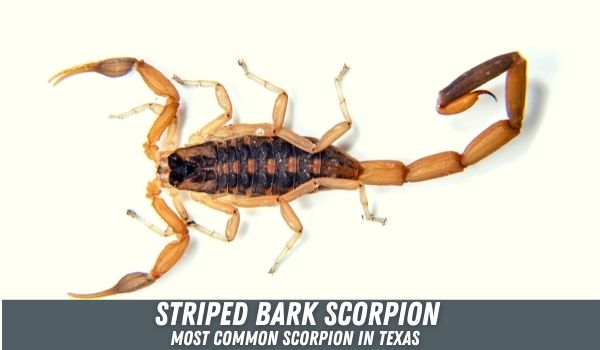
Texas Cave Scorpion
The Texas Cave Scorpion (Pseudouroctonus reddelli ) is mostly found in Central Texas, however they are usually found in and around the caves of Central Texas as their name suggests.
They also live under limestone and in grottos, so if you are going rock climbing in Central Texas, you may see a Texas Cave Scorpion as it slips between the cracks to avoid the sunlight.
It is very unlikely that you will come across Texas Cave Scorpions in your house or in any other residential area.
The Texas Cave Scorpions are quite dark in color and have thicker pincers than the Striped Bark Scorpions.
Their dark color allows them to camouflage more easily in dark caves. They range from about an inch and a half to just under two inches long.
The Texas Cave Scorpion is venomous, but will only cause you mild discomfort.
Make sure to keep an eye on the person who was stung; if they are allergic you may want to seek medical help right away.

Trans-Pecos Smooth Claw Scorpion
Found in Western Texas, just south of Davis County you can find the Trans-Pecos Smooth Claw Scorpion ( Diplocentrus lindo )
They are found mostly in the Trans-Pecos Mountains which are dry and arid.
The Trans-Pecos Scorpion is dark brown in color and is only about an inch and a half to three inches long.
These scorpions in Texas tend to burrow into the sand during the day and come out at night to find food.
Stripe-Tailed Scorpion
Stripe-Tailed Scorpions ( Hoffmannius spinigerus ) are not extremely common to find in homes in Texas, but they do like to hide under things, hiding from the sun during the day.
They seek out a stable source of moisture and food sources which could drive them indoors given the right conditions.
The Stripe-Tailed Scorpion can grow to be about 2-3 inches in length in Texas.
The Stripe-Tailed Scorpion is a pale tan color, with a more robust tail and pincers than its counterpart the Striped Bark Scorpion.
The Stripe-Tailed Scorpion also has a noticeable stripe down its tail, hence the name Stripe-Tailed Scorpion.
The Stripe-Tailed Scorpion does sting when provoked but it’s sting has been likened to that of a bee sting.
There should only be mild discomfort if stung by a Stripe-Tailed Scorpion.

Intermediate Scorpion
The Intermediate Scorpion ( vaejovis intermedius ) can be found within the Chihuahuan Desert that spans from Mexico into South-Western parts of Texas
In Texas , They tend to dwell within rocky areas and around cliffs.
The Intermediate scorpion is a fast mover that is less than 2 ½ inches in length.
Intermediate Scorpions tend to live around others of their kind, this means that if you find one there are more usually around.
They are considered mean to others, and will sting if they get the chance.
Effects of Intermediate Scorpion venom have not been readily studied, but if you suffer from symptoms of anaphylaxis seek medical help immediately.
Wauer’s Scorpion
Maaykuyak Waueri or Wauer’s Scorpions are found sporadically throughout all of Texas.
These tiny scorpions are barely larger than an inch in length as adults.
They are a sandy tan color and their pincers and stinger are a darker brown color.
Wauer’s Scorpions are venomous, but a sting from them would cause you some swelling and discomfort at the sting site.
Big Bend Scorpion
The Big Bend Scorpion ( Vinegaroon ) can be found mostly in Southwestern Texas, specifically around Big Bend National Forest. Another name for the Big Bend Scorpion is the Whip Scorpion or even a Vinegaroon.
These scorpions can get to be almost 3 inches long and are actually a cross between a scorpion and a spider.
Their appearance is specifically unique because they don’t have the classic stinger of a scorpion but rather a whip-like appendage that shoots a vinegary acid-like substance.
Big Bend Scorpions are also dark brown and black in color.
If you find a Big Bend Scorpion in Texas make sure to stay away from its pincers.
They have been known to pinch so hard that they draw blood.
If you are within Big Bend National Forest in Texas find a Park Ranger and inform them of where you saw the Scorpion.

Thick Handed Scorpion
The Thick Handed Scorpion (Vaejovis crassimanus ) is commonly found throughout Southwestern Texas as well as Southern Texas, throughout much of the Chihuahuan Desert.
They are tan or sandy in color, which allows them to blend into the sand of the desert better.
Thick Handed scorpions tend to burrow into the sand during the day and only come out at night to hunt for food.
Pseudouroctonous Brysoni
A relatively new scorpion discovery from 2017, P. Brysoni is most commonly found within Davis County on the Southwestern side of Texas. They live in rocky and sandy areas with some shade coverage.
The scorpion has a brown coffee bean coloration on most of its body, while its legs are a much lighter tan color. P. Brysoni Scorpions are quite small ranging from only ¾ of an inch to roughly 1 ¼ inches long.
There is no information yet on how venomous the P. Brysoni Scorpion is, however as long as you monitor the person who was stung for anaphylaxis symptoms you should be fine.
Consult with a medical professional if you are unsure.
Russell’s Scorpion
Russell’s Scorpion ( Chihuahuanus russelli ) is so named after a famous Venomologist who just so happened to live in an area where the scorpion was most commonly found.
Russell’s Scorpion is another animal that lives within the Chihuahuan Mountains along the Southwestern border of Texas and Mexico.
Russell’s Scorpions have also been found to live throughout Arizona and New Mexico.
Their bodies are a sandy tan color while their pincers are a brighter maroon color.
Russell’s scorpions tend to burrow along the base of plants in deserts during the day or in wide open grassland areas.
Giant Desert Hairy Scorpion
While found mostly in the Mojave and Sonoran Deserts, The Giant Hairy Scorpion ( Hadrurus arizonensis) has been making its way into Western Texas due to changes in the climate.
Growing up to 7 inches long these intimidating Scorpions can be identified first by their size and then by the small brown colored hairs that cover its body. They are also pale brown to yellow in color.
It is the largest scorpion in North America, but it has a weak to mild venom, just causing pain and swelling upon stinging.
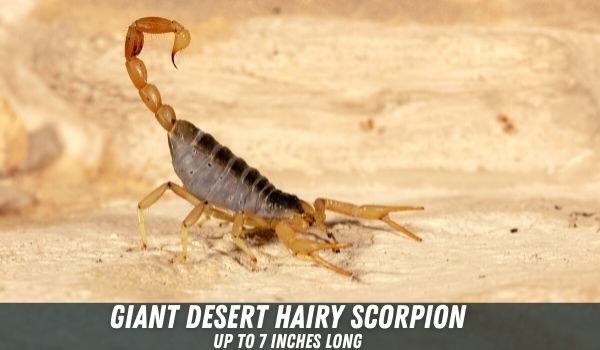
Eastern Sand Scorpion
The Eastern Sand Scorpion (Paruroctonus utahensis )can be most commonly found around the El Paso, Texas area.
Specifically around areas in Texas that are sandy or are sandy substrates.
They are a dark yellow or dijon mustard color that matches with the sand that they live in and around.
This allows them the perfect camouflage while hunting on the sand.
They prefer climates ranging from 70 to 100 degrees, and anything outside of that climate zone would potentially push them to venture into other places to live, such as your house.
They are venomous but they have a mild venom that may leave you feeling like you were just stung by a bee.
Can you die from a scorpion sting in Texas?
None of the scorpions in Texas are medically dangerous if stung unless you are allergic, in which case you could go into anaphylactic shock.
If not treated properly and right away Scorpions stings can be deadly and you can die from anaphylaxis.
It is incredibly important to keep an eye on the person who was stung in any situation to ensure that they don’t become medically distressed.
This includes bees, scorpions, and other things that sting.
Signs of anaphylaxis include: shallow breathing, difficulty breathing, lightheadedness, increased heart rate, or increased confusion.
In most cases, discomfort follows the scorpion sting like that of a bee.
In other cases more intense pain can accompany the sting. In Texas there are no scorpions that have the ability to kill just with their venom.
The Bark Scorpion, and more notably the Arizona Bark Scorpion, can cause intense pain from a sting coupled with numbness of the area, and sometimes immobility of the area where the sting occurred.
When in doubt, always consult with a medical professional.
They may be able to lessen the effects of the venom as it leaves the body naturally.
Are there Scorpions in Austin, Texas?
There are several different scorpions that can be found around Austin, Texas but remember that Scorpions are nocturnal creatures.
In most cases, if you visit Austin you won’t find any scorpions unless you are out at night.
Another handy tip is that if you do see a scorpion, leave it alone. Most scorpions will not sting unless provoked or if they feel threatened.
If you still feel unsure about how you will know if there are scorpions around, a handy dandy blacklight will be the best tool to have.
Scorpions are fluorescent and will appear to glow, making them much easier to see and identify in the dark.
How do I keep Scorpions Out of my House in Texas?
The best way to keep scorpions out of your house in Texas is to make sure that there is no way for them to enter your house in the first place.
Ensure that crevices and cracks are sealed up, and that screens and doors are tight fitting.
Next, make sure that large piles of leaves or wood are not sitting right up against the house.
Most scorpions in Texas are excellent climbers and will hide in these piles until they eventually find a way inside.
Spraying outside of the home can be enough of a deterrent for some species of Scorpions, but is not enough for others.
If you have seen one inside of the house, you can also set up glue traps to gauge the problem.
Scorpions in Texas are drawn to larger bug or insect populations, which means if you have a scorpion in your home, you will also more than likely have a bug or insect problem.
On the bright side, the scorpions in Texas are most likely helping with the problem as they will be feasting on the other insects.
There are also sprays that are safe to use inside for pets and children, and you can also use sticky traps to catch the scorpions.
Be advised though that just spraying repellent is not going to take care of the problem on its own.
You may also have to use a dust repellant inside of your home in areas that do not have a high volume of traffic like the attic.
Some people also say that some essential oils like Lavender, Peppermint, and Cedar can be useful detterrants to scorpions as well.
This is not scientifically proven, but can be a helpful starting place.
If all else fails, call a professional pest control company and tell them about what steps you have already taken to take care of the problem

